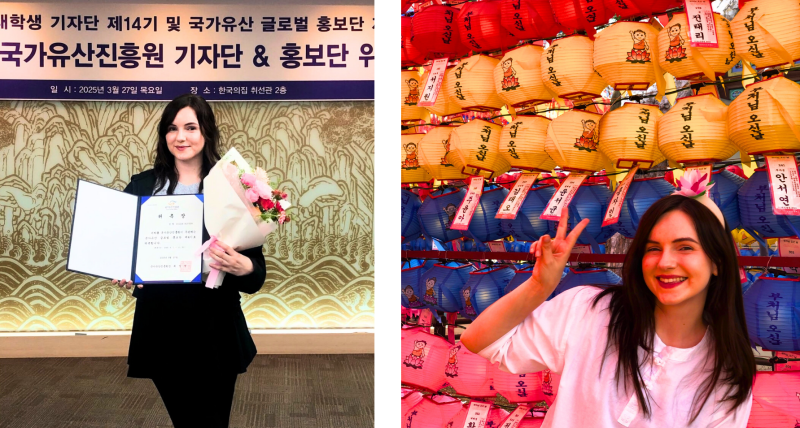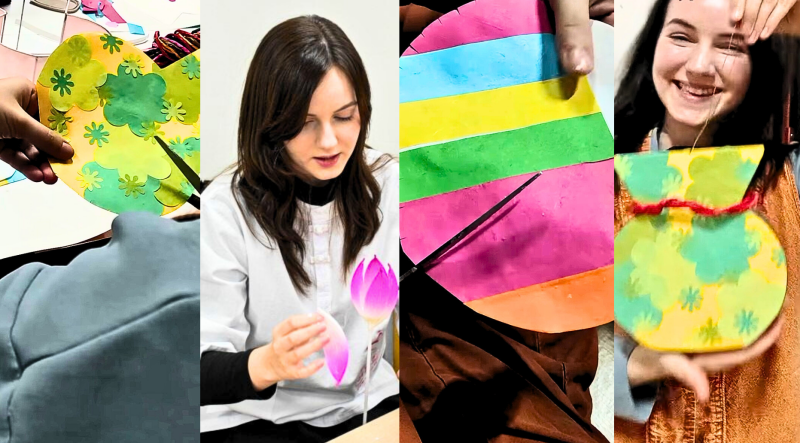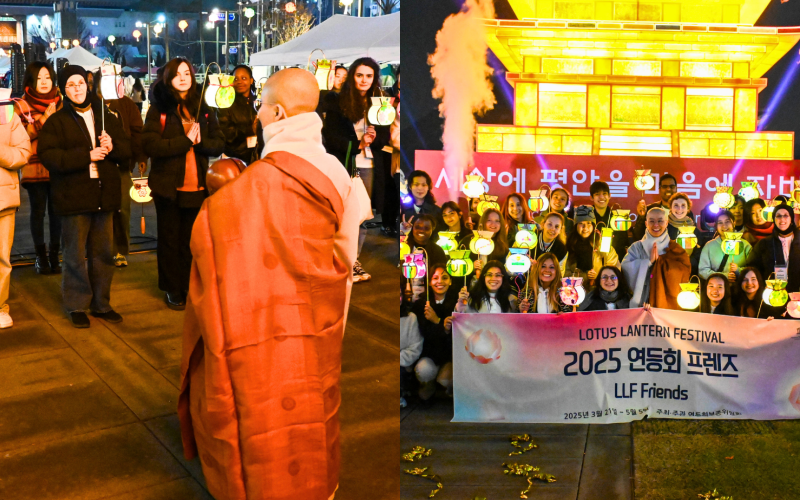- 한국어
- English
- 日本語
- 中文
- العربية
- Español
- Français
- Deutsch
- Pусский
- Tiếng Việt
- Indonesian
By Honorary Reporter Oshini Jayamuni from Sri Lanka
Photos = Alyssa Dudda
The Lotus Lantern Festival, known as Yeon Deung Hoe, illuminates the streets of Seoul every spring to commemorate Buddha's birth through colorful lantern displays that symbolize the spread of enlightenment and wisdom throughout the world.
Alyssa Dudda from Germany, a cultural ambassador for the Korea Heritage Agency and contributor to the Seoul Metropolitan Government's magazine Seoul Life, attended this year's festival.
The following are excerpts from an email interview with Dudda and social media messages from April 29 to May 1.

Alyssa Dudda is a cultural ambassador for the Korea Heritage Agency who attended this year's Lotus Lantern Festival.
How did you get appointed as a cultural ambassador for this event?
Ahead of the Lotus Lantern Festival, the organizing committee posted a call for foreign volunteers on social media called Lotus Lantern Festival Friends. After I applied, I made it to the next round and was invited to an in-person interview; we introduced ourselves and discussed our connections to the festival. Shortly afterward, I received an invitation to the introduction ceremony.
What was your role as a cultural ambassador for this event?
I worked more closely with the organizing committee. Because of my background in entertainment and being a Buddhist, the committee approached me shortly after the selection process and asked if I could create content for their social media.
After a meeting, we decided on topics and videos to produce and organized everything accordingly. It was a challenge for me to organize, film, direct and perform in the videos, especially under tight time constraints, but it was a great learning experience and helped me grow a lot.

Dudda uses Hanji (traditional paper) to make lucky pouch lanterns for display in the festival's parade.
As an organizing assistant, describe the activities planned for the event.
Making handcrafted items such as lanterns using Hanji (traditional paper) was part of our preparation activities. We carried the lanterns during a prayer following the official lantern lighting ceremony, which marks the beginning of the event, and symbolizes the lighting of wisdom to overcome darkness and ignorance.
A week before the festival, we attended a workshop to learn to make flowers from types of paper, and we made lotus flowers from paper and gave them to passersby to promote the festival. On the morning of the second day (April 27), booths along the road in front of Jogyesa Temple had activities for visitors.
What was your most memorable part of this experience?
For me, the highlight was the honor of pushing one of the large lantern carts in the parade of the festival. We made our way through Insadong and back to Jogyesa, showcasing the beautiful lanterns that many people had made.
It was also my first time attending the second-day parade. Afterward, we performed on stage during Yeondeungnori (Final Performance) with amateur performers from Jogyesa, Bongeunsa Temple and Hanmaum Seon Center.

Volunteers of the Lotus Lantern Festival pose with the lanterns they made.
What message do you think the festival sent to those visiting for the first time?
I think it was a message of peace and hope for a better world, like an invitation to pause for a moment, take a breath and find inner peace amid our hectic daily lives. I hope it inspired people to step out of their usual routines and feel a sense of serenity.
msjeon22@korea.kr
*This article is written by a Korea.net Honorary Reporter. Our group of Honorary Reporters are from all around the world, and they share with Korea.net their love and passion for all things Korean.